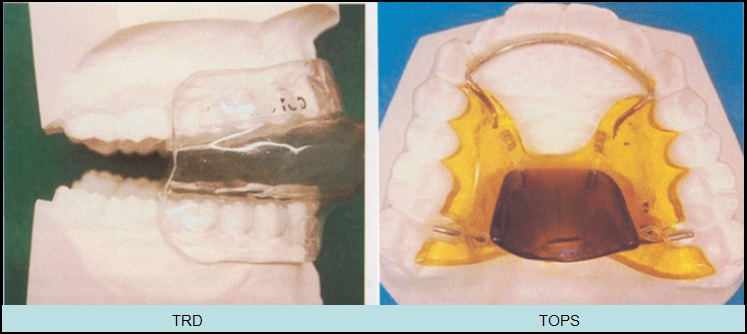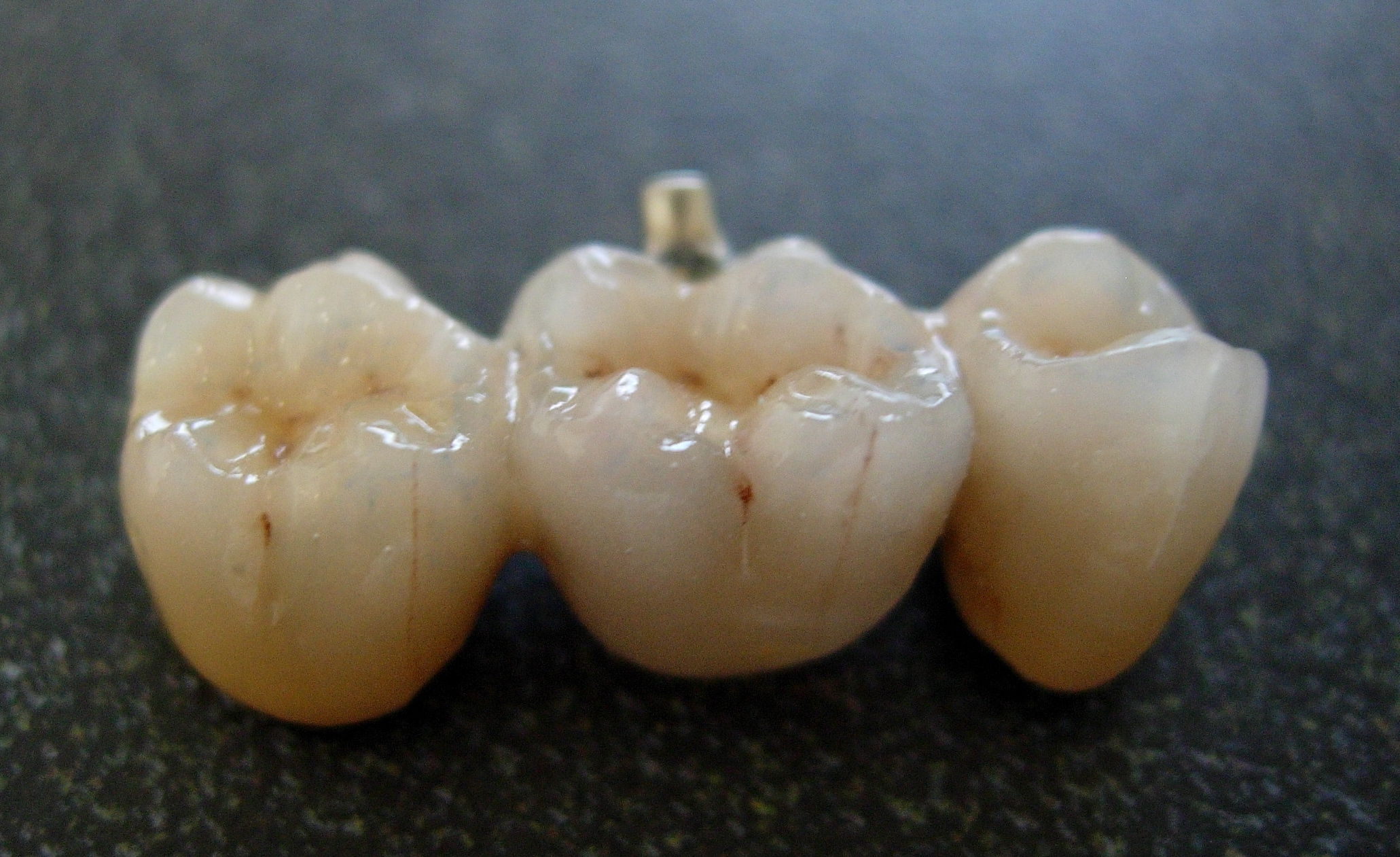|
Conservative Dentistry
Conservative Dentistry, also known as operative dentistry or crown and bridge dentistry, is the area of dentistry that focuses on dental crowns and bridges. Treatment modalities * Bridge * Crown * Veneer * Fixed prosthodontics * Inlays and onlays See also *American College of Prosthodontists * British Society for Restorative Dentistry * Commonly used terms of relationship and comparison in dentistry * Craniofacial prosthesis * Dental fear * Dental restoration * Dental braces * Mandibular advancement splint A mandibular splint or mandibular advancement splint is a prescription custom-made medical device worn in the mouth used to treat sleep-related breathing disorders including: obstructive sleep apnea (OSA), snoring, and TMJ disorders. These devi ... * Oral and maxillofacial surgery * Dental implant * '' European Journal of Prosthodontics and Restorative Dentistry'' References Prosthodontology {{dentistry-stub ... [...More Info...] [...Related Items...] OR: [Wikipedia] [Google] [Baidu] |
Dentistry
Dentistry, also known as dental medicine and oral medicine, is the branch of medicine focused on the teeth, gums, and mouth. It consists of the study, diagnosis, prevention, management, and treatment of diseases, disorders, and conditions of the mouth, most commonly focused on dentition (the development and arrangement of teeth) as well as the oral mucosa. Dentistry may also encompass other aspects of the craniofacial complex including the temporomandibular joint. The practitioner is called a dentist. The history of dentistry is almost as ancient as the history of humanity and civilization with the earliest evidence dating from 7000 BC to 5500 BC. Dentistry is thought to have been the first specialization in medicine which have gone on to develop its own accredited degree with its own specializations. Dentistry is often also understood to subsume the now largely defunct medical specialty of stomatology (the study of the mouth and its disorders and diseases) for which reas ... [...More Info...] [...Related Items...] OR: [Wikipedia] [Google] [Baidu] |
Dental Fear
Dental fear, or dentophobia, is a normal emotional reaction to one or more specific threatening stimuli in the dental situation. However, dental anxiety is indicative of a state of apprehension that something dreadful is going to happen in relation to dental treatment, and it is usually coupled with a sense of losing control. Similarly, dental phobia denotes a severe type of dental anxiety, and is characterised by marked and persistent anxiety in relation to either clearly discernible situations or objects (e.g. drilling, local anaesthetic injections) or to the dental setting in general. The term ‘dental fear and anxiety’ (DFA) is often used to refer to strong negative feelings associated with dental treatment among children, adolescents and adults, whether or not the criteria for a diagnosis of dental phobia are met. Dental phobia can include fear of dental procedures, dental environment or setting, fear of dental instruments or fear of the dentist as a person. People with dent ... [...More Info...] [...Related Items...] OR: [Wikipedia] [Google] [Baidu] |
External Links
An internal link is a type of hyperlink on a web page to another page or resource, such as an image or document, on the same website or domain. Hyperlinks are considered either "external" or "internal" depending on their target or destination. Generally, a link to a page outside the same domain or website is considered external, whereas one that points at another section of the same web page or to another page of the same website or domain is considered internal. These definitions become clouded, however, when the same organization operates multiple domains functioning as a single web experience, e.g. when a secure commerce website is used for purchasing things displayed on a non-secure website. In these cases, links that are "external" by the above definition can conceivably be classified as "internal" for some purposes. Ultimately, an internal link points to a web page or resource in the same root directory. Similarly, seemingly "internal" links are in fact "external" for ... [...More Info...] [...Related Items...] OR: [Wikipedia] [Google] [Baidu] |
European Journal Of Prosthodontics And Restorative Dentistry
''European Journal of Prosthodontics and Restorative Dentistry'' is a peer-reviewed medical journal published by Dennis Barber. It was established in 1992 with Paul S. Wright as its founding editor-in-chief. The current editor is Will Palin (Birmingham University). The journal is abstracted and indexed in MEDLINE/PubMed PubMed is a free search engine accessing primarily the MEDLINE database of references and abstracts on life sciences and biomedical topics. The United States National Library of Medicine (NLM) at the National Institutes of Health maintain the .... References External links * Academic journals established in 1992 Quarterly journals English-language journals Dentistry journals {{Medical-journal-stub ... [...More Info...] [...Related Items...] OR: [Wikipedia] [Google] [Baidu] |
Dental Implant
A dental implant (also known as an endosseous implant or fixture) is a prosthesis that interfaces with the bone of the jaw or skull to support a dental prosthesis such as a crown, bridge, denture, or facial prosthesis or to act as an orthodontic anchor. The basis for modern dental implants is a biologic process called osseointegration, in which materials such as titanium or zirconia form an intimate bond to bone. The implant fixture is first placed so that it is likely to osseointegrate, then a dental prosthetic is added. A variable amount of healing time is required for osseointegration before either the dental prosthetic (a tooth, bridge or denture) is attached to the implant or an abutment is placed which will hold a dental prosthetic/crown. Success or failure of implants depends on the health of the person receiving the treatment, drugs which affect the chances of osseointegration, and the health of the tissues in the mouth. The amount of stress that will be put on the impla ... [...More Info...] [...Related Items...] OR: [Wikipedia] [Google] [Baidu] |
Mandibular Advancement Splint
A mandibular splint or mandibular advancement splint is a prescription custom-made medical device worn in the mouth used to treat sleep-related breathing disorders including: obstructive sleep apnea (OSA), snoring, and TMJ disorders. These devices are also known as mandibular advancement devices, sleep apnea oral appliances, oral airway dilators, and sleep apnea mouth guards. The American Academy of Sleep Medicine (AASM) and the American Academy of Dental Sleep Medicine (AADSM) recommend that sleep physicians should prescribe sleep apnea oral appliances for the adult patients who need treatment for their primary snoring (without obstructive sleep apnea) rather than no treatment and for the patients who have obstructive sleep apnea but are intolerant to the CPAP therapy, or for those who prefer alternate therapy. Vanderveken ''et al'' (2008) researched prescription custom-made splints head-to-head with thermoplastic over-the-counter splints: "Our results suggest that the thermop ... [...More Info...] [...Related Items...] OR: [Wikipedia] [Google] [Baidu] |
Dental Braces
Dental braces (also known as braces, orthodontic cases, or cases) are devices used in orthodontics that align and straighten teeth and help position them with regard to a person's bite, while also aiming to improve dental health. They are often used to correct underbites, as well as malocclusions, overbites, open bites, gaps, deep bites, cross bites, crooked teeth, and various other flaws of the teeth and jaw. Braces can be either cosmetic or structural. Dental braces are often used in conjunction with other orthodontic appliances to help widen the palate or jaws and to otherwise assist in shaping the teeth and jaws. Process The application of braces moves the teeth as a result of force and pressure on the teeth. There are traditionally four basic elements used: brackets, bonding material, arch wire, and ligature elastic (also called an “O-ring”). The teeth move when the arch wire puts pressure on the brackets and teeth. Sometimes springs or rubber bands are used to put ... [...More Info...] [...Related Items...] OR: [Wikipedia] [Google] [Baidu] |
Dental Restoration
Dental restoration, dental fillings, or simply fillings are treatments used to restore the function, integrity, and morphology of missing tooth structure resulting from caries or external trauma as well as to the replacement of such structure supported by dental implants. They are of two broad types—''direct'' and ''indirect''—and are further classified by location and size. A root canal filling, for example, is a restorative technique used to fill the space where the dental pulp normally resides. Tooth preparation Restoring a tooth to good form and function requires two steps: # preparing the tooth for placement of restorative material or materials, and # placement of these materials. The process of preparation usually involves cutting the tooth with a rotary dental handpiece and dental burrs, a dental laser, or though air abrasion to make space for the planned restorative materials and to remove any dental decay or portions of the tooth that are structurally unsound. ... [...More Info...] [...Related Items...] OR: [Wikipedia] [Google] [Baidu] |
Craniofacial Prosthesis
Craniofacial prostheses are prostheses made by individuals trained in anaplastology or maxillofacial prosthodontics who medically help rehabilitate those with facial defects caused by disease (mostly progressed forms of skin cancer, and head and neck cancer), trauma ( outer ear trauma, eye trauma) or birth defects (microtia, anophthalmia). They have the ability to replace almost any part of the face, but most commonly the ear, nose or eye/eyelids. An ocular prosthesis and hair prosthesis can also be classified as craniofacial prostheses. Prostheses are held in place either by biocompatible drying adhesives, osseointegrated implants, magnets, or another mechanical means (although rare) such as glasses or straps. Prostheses are designed to be as similar as possible to the natural anatomy of each individual. Their purpose is to cover, protect, and disguise facial disfigurements or underdevelopments. When surgical reconstruction is not ideal, craniofacial prosthetics are favo ... [...More Info...] [...Related Items...] OR: [Wikipedia] [Google] [Baidu] |
Bridge (dentistry)
A bridge is a fixed dental restoration (a fixed dental prosthesis) used to replace one or more missing teeth by joining an artificial tooth definitively to adjacent teeth or dental implants. Definitions Fixed bridge: A dental prosthesis that is definitively attached to natural teeth and replaces missing teeth. Abutment: The tooth that supports and retains a dental prosthesis. Pontic: The artificial tooth that replaces a missing natural tooth. Retainer: The component attached to the abutment for retention of the prosthesis. Retainers can be major or minor. Unit: Pontics and abutment teeth are referred to as units. The total number of units in a bridge is equal to the number of pontics plus the number of abutment teeth. Saddle: The area on the alveolar ridge which is edentulous where at least one missing tooth is to be reinstated. Connector: Joins the pontic to the retainer or two retainers together. Connectors may be fixed or movable. Span: The length of the alveolar rid ... [...More Info...] [...Related Items...] OR: [Wikipedia] [Google] [Baidu] |
Commonly Used Terms Of Relationship And Comparison In Dentistry
This is a list of definitions of commonly used terms of location and direction in dentistry. This set of terms provides orientation within the oral cavity, much as anatomical terms of location provide orientation throughout the body. Terms Combining of terms Most of the principal terms can be combined using their corresponding combining forms (such as ''mesio-'' for ''mesial'' and ''disto-'' for ''distal''). They provide names for directions (vectors) and axes; for example, the coronoapical axis is the long axis of a tooth. Such combining yields terms such as those in the following list. The abbreviations should be used only in restricted contexts, where they are explicitly defined and help avoid extensive repetition (for example, a journal article that uses the term "mesiodistal" dozens of times might use the abbreviation "MD"). The abbreviations are ambiguous: (1) they are not spe ... [...More Info...] [...Related Items...] OR: [Wikipedia] [Google] [Baidu] |





